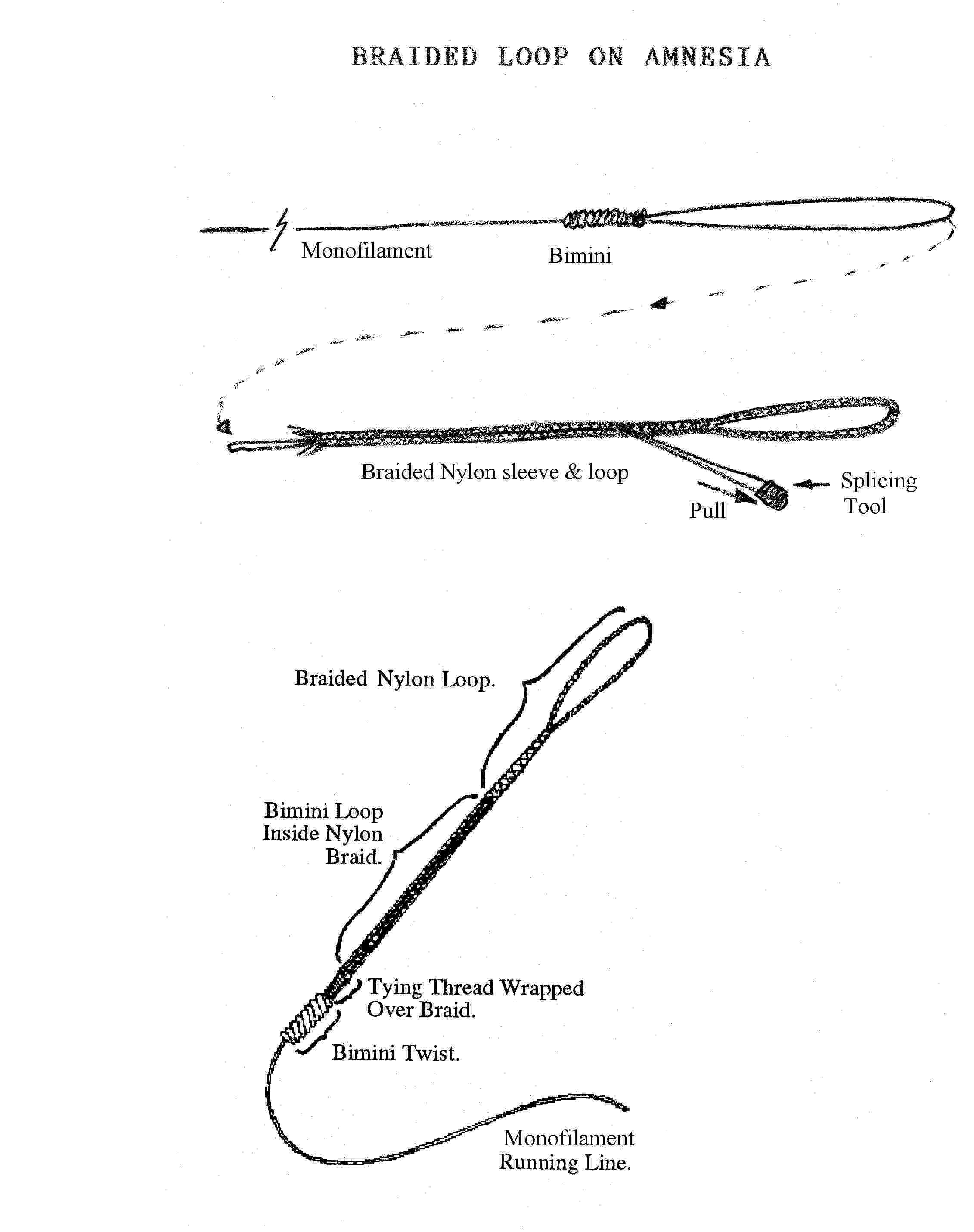As a result of breaking off a 6 foot shark and losing a shooting head I began testing the break strength of Monofilament running lines for various knots. The big surprise, for me, was that almost all knots that might be used with a monofilament running line reduced the break strength to about 70% of the line rating. The knots tested were: Blood knot (63%), improved Blood knot (73%), triple sheet bend (67%), triple surgeons knot (73%), nail knot (67%), Albright knot (88%), and the Bimini twist (100%). With the exception of the Albright and Bimini all of the other knots caused the line to break between 60% and 75% of the rated strength. The conclusion was: either allow for the considerable reduction in strength by using stronger lines, which are harder to cast, or use the Bimini.
After a little practice, the Bimini can be tied without much trouble. However, the technique shown in the books creates a large loop of line on the tag end of the knot. This is OK if the line is to be terminated, as is the custom, with a double surgeons loop or other knots. But, for a running line application, a smoother transition is needed, to prevent the knot from catching on the guides.
My method for producing a smooth transition is to use a braided Nylon loop to connect to the Bimini but to do this a short Bimini loop is required. I found that a loop of about four inches would result if about three feet of line were used (18” of double line after folding back for twisting) and, after twisting 30 times, placing the loop, that is now tight about the finger used to twist it, over a post such as the barrel of a fly tying vise and then drawing on both ends of the line to compress the twist to a length of about four inches. The tension will then be sufficient to allow the first several overlaping turns to be made, after which the index finger of the overlap hand can be forced into the loop at the post and drawn toward you to provide the force needed to complete the overlap turns (moisten twist and finger tip first). The hand holding the main line should slide at least one foot away from the knot in the process, to allow the knot to rotate. The knot is secured, in the usual fashion, by a half hitch followed by a four turn hitch and the tag end is cut flush with the surface of the knot. (A Manual and videos on fly casting system knots are available - see TABLES OF CONTENT for more information).
At this point a loop to loop connection could be made between a shooting head and the Bimini loop but the break strength would be only 85% of the line rating (the loop will break - not the line). Still, if you are in a hurry or on stream, it is worth doing this for the resulting increase in strength (25%).
To achieve 100% break strength and a smooth transition I make a braided Nylon loop, similar to those available in the sport shops (except that tag end is double locked) for adding a loop to the end of a fly line. The loop from the Bimini is drawn into the braided sleeve and the braid end is secured to the Bimini loop by wrapping with Nylon tying thread. The thread and bimini twist are coated with Pliobond cement to finish the job.

When tension is applied to the assembly the nylon braid grips the bulge at the apex of the Bimini loop (the same action as the Chinese finger trap) and there is sufficient friction to prevent the sleeve from pulling off. I have tested this connection many times and the line has always broken away from the knot - indicating a 100% connection.
For more articles Index . To contact Bill for information: billsknots@aol.com